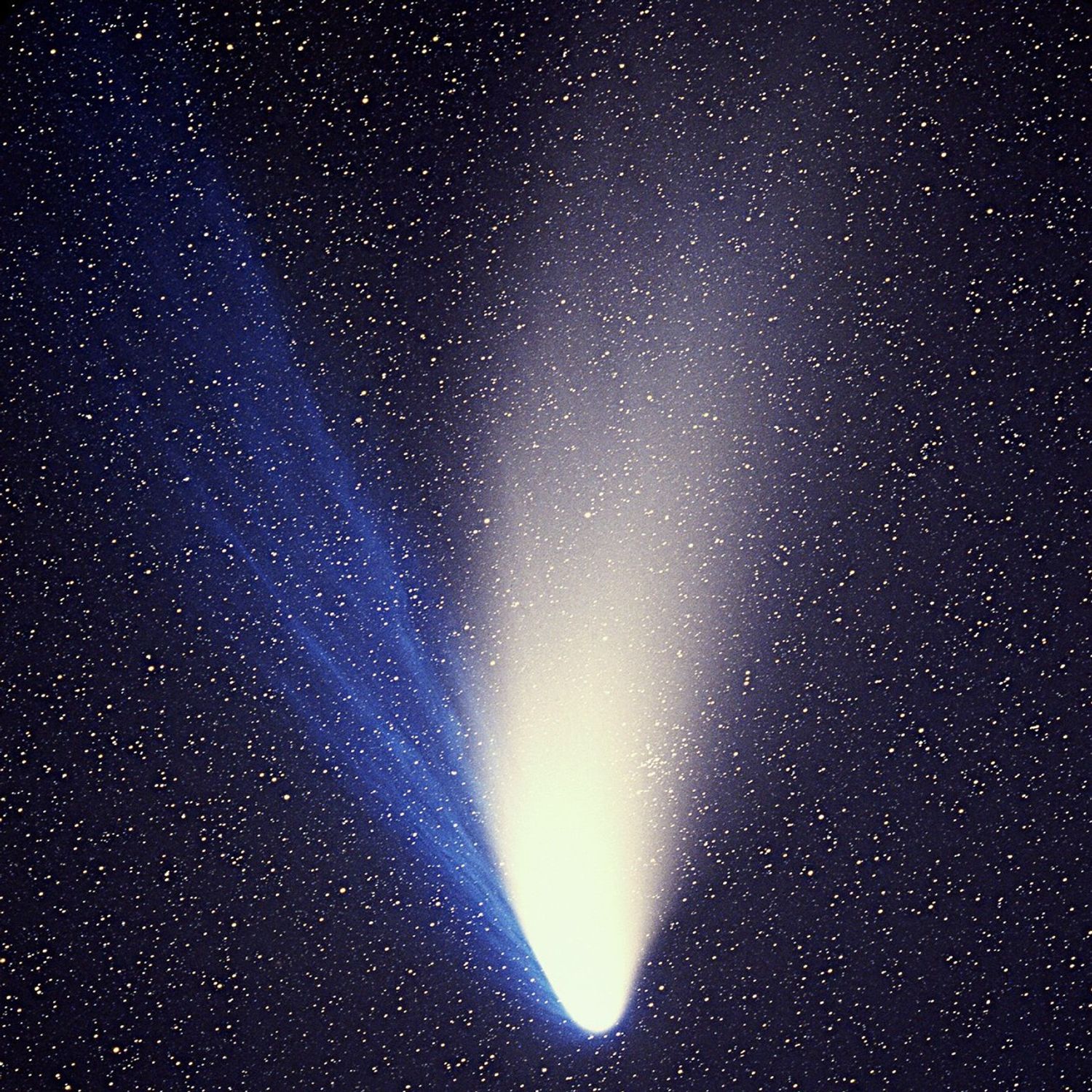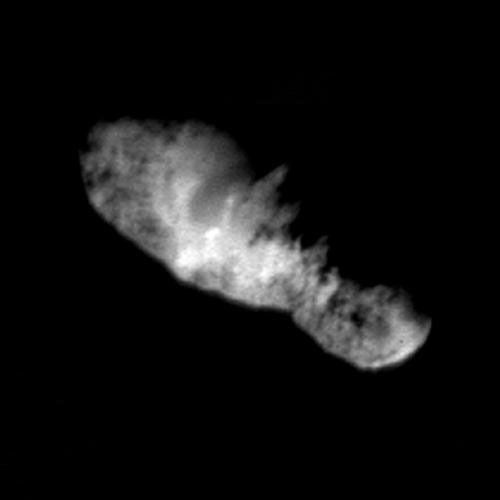1 min read
Comet Hale-Bopp (Johannes-Kepler Observatory)

Scientists using Webb plan to observe a “target-of-opportunity” comet, one that is not yet known but is expected to be discovered in the first year of the telescope’s mission. If they are lucky, perhaps they might capture an interstellar comet, or perhaps they will train Webb on a comet similar to Hale–Bopp, shown above in a ground-based photo shortly after passing perihelion in April 1997. Comet Hale–Bopp, thought to be from the Oort Cloud, was one of the brightest comets seen for many decades. Visible to the naked eye for a record 18 months, it could be seen even from major cities with light-polluted skies.
Image is available under Creative Commons CC-by-SA 3.0. E. Kolmhofer, H. Raab; Johannes-Kepler-Observatory, Linz, Austria.
About the Data
- Data DescriptionData DescriptionProposal: A description of the observations, their scientific justification, and the links to the data available in the science archive.
Science Team: The astronomers who planned the observations and analyzed the data. "PI" refers to the Principal Investigator.Ground-based photograph
- Object NameObject NameA name or catalog number that astronomers use to identify an astronomical object.Comet Hale-Bopp (C/1995 O1)
- Object DescriptionObject DescriptionThe type of astronomical object.Comet
- Release DateSeptember 25, 2019
- Science ReleaseNASA’s Webb to Unlock the Mysteries of Comets and the Early Solar System
- CreditImage: Erich Kolmhofer (Johannes-Kepler Observatory), Herbert Raab (Johannes-Kepler Observatory)
Related Images & Videos

Nucleus of Comet 19P/Borrelly (Deep Space 1)
One of the comets the Webb team will study following its 2021 launch is Borrelly, a Jupiter-family comet. NASA's Deep Space 1 spacecraft snapped this image of Borrelly’s icy, rocky nucleus in September 2001. The irregularly shaped nucleus is 8 kilometers, or 5 miles, long. While...
Share
Details
Laura Betz
NASA’s Goddard Space Flight Center
Greenbelt, Maryland
laura.e.betz@nasa.gov
Erich Kolmhofer (Johannes-Kepler Observatory), Herbert Raab (Johannes-Kepler Observatory)































